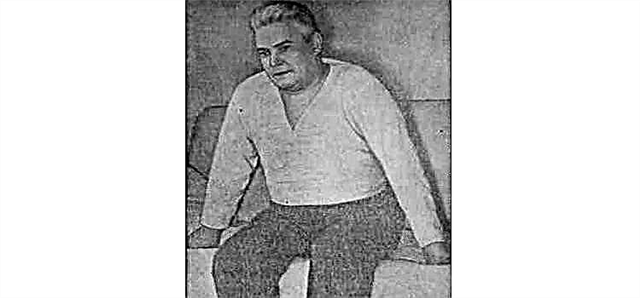The condition when blood flows from the nose is called epistaxis in scientific circles. In most cases, approximately 90-95%, the disorder goes away on its own and does not pose any health risk. However, if profuse (profuse) epistaxis occurs, the patient is at risk of serious blood loss, sometimes even deaths occur. In order to eliminate the violation in time, you need to know why blood is flowing from the nose, what pathologies or factors influenced the onset of this condition.
Types of epistaxis
 If a person has nosebleeds, this indicates a disturbance in the functioning of the body and weakness of blood vessels and arterioles. In this case, the patient may not feel anything at all if the blood in the nose is formed in small quantities. However, there can be a significant deterioration in the patient's condition if he has lost a lot of blood.
If a person has nosebleeds, this indicates a disturbance in the functioning of the body and weakness of blood vessels and arterioles. In this case, the patient may not feel anything at all if the blood in the nose is formed in small quantities. However, there can be a significant deterioration in the patient's condition if he has lost a lot of blood.
According to the severity, epistaxis is divided into the following categories:
- Insignificant. Blood from the nose flows out in a small trickle or simply drips, while its amount is completely insignificant, up to several milliliters. The patient does not feel any additional symptoms, the condition quickly stabilizes and does not pose a threat to health and life.
- Moderate. Bleeding from the nose is not too profuse, the symptoms are not very pronounced. The patient may feel mild dizziness, but remain conscious, the pulse quickens, the mucous membranes and skin become pale.
- Massive. Severe nosebleeds give losses of up to 300-400 ml, while the symptoms become more pronounced, the patient has severe shortness of breath, he constantly wants to drink, makes a noise in his ears, there is a severe headache and dizziness, in this state you need to sit still so as not faint and not be injured.
- Heavy. Profuse nosebleeds are accompanied by pronounced symptoms. The patient's pressure drops sharply, blood circulation in the internal organs is disturbed, which causes clouding of consciousness and inhibition of the reaction. Blood loss can exceed 500 ml, which is dangerous to health and life; if medical care is not provided in a timely manner, a lethal outcome is possible.
Location classification:
- Anterior epistaxis. It occurs in the anterior lower part of the nose, occurs most often - in more than 90% of cases. It is associated with injury to the Kisselbach plexus - a dense network of arterioles and capillaries located close to the mucous membrane. If the patient does not have any clotting problems, the nosebleeds go away on their own after a few minutes. The discharge is rather scanty, the blood flows out in a thin stream or in droplets.
- Posterior epistaxis. Severe epistaxis that occurs in the posterior or middle section. A bright red liquid comes out of the nose, it can foam, the losses are quite large, you cannot help the patient on your own. Blood runs not only from the nose, it flows down the back of the pharynx into the throat and into the mouth, causing a gag reflex. In some cases, complications such as the discharge of blood from the eye socket or lacrimal pocket are possible. If you do not call an ambulance in time, the patient may die.
Reasons for violation
It is customary to highlight factors of a general and local nature that provoke nosebleeds. Local causes mean that the problem is concentrated directly in the nasal cavity, and it is easier to fix them. If epistaxis is a symptom of a systemic disease, we are talking about common factors, the treatment is rather difficult and takes a long time. Let's consider in more detail why violations appear and what they can mean.
Local:
- Injury. Getting injuries, bruises, blows and other mechanical damage to soft tissues can lead to the fact that the nose will bleed. If a severe bruise or even a fracture is found, then you cannot do without the help of doctors.
- The presence of foreign bodies in the nasal cavity. Most often, the nose bleeds for this reason in children, as they like to introduce different objects into the nostrils for the purpose of experiment. A high degree of danger exists only in cases where the foreign body has sharp edges, it should only be removed by a doctor.
 Wrong nose toilet. Violent blowing or vigorous picking of the crusts may cause blood to flow. Epistaxis in such cases is not abundant, goes away on its own and does not cause any concern.
Wrong nose toilet. Violent blowing or vigorous picking of the crusts may cause blood to flow. Epistaxis in such cases is not abundant, goes away on its own and does not cause any concern.- Overdried hot air. People who are constantly in dry, dusty rooms are prone to depletion of the nasal mucous membranes, they become dry and brittle, therefore they cannot fully protect the vessels and capillaries from rupture. Signs of nosebleeds can be eliminated by using special humidifiers at home and protective equipment at work.
- Inflammatory processes. Rhinitis and sinusitis cause degenerative processes in the mucous membrane, which is why in some cases it bleeds. Vessels and capillaries expand, but due to their thinness they cannot withstand the pressure and burst from time to time.
- Allergic reactions. Due to the strong flow of blood to the nose during an allergic reaction, blood can flow, this is due to insufficient elasticity of the blood vessels.
- Anatomical features. With deformation of the cartilage or nasal septum, a constantly recurring epistaxis occurs. It can be eliminated only with the help of surgical intervention.
- The presence of neoplasms in the nose. Papillomas, cysts and other neoplasms in the nasal cavity cause degenerative processes in the mucous membrane. Due to its insufficient density and moisture, the vessels and capillaries burst, bleeding from the nose occurs.
- Drug addiction. Inhalation of narcotic drugs through the nose makes the mucous membrane very vulnerable, blood from the nose in adults in this condition flows even from the slightest touch.
- Postoperative period. Rehabilitation after surgery may not be very successful. However, a bleeding nose recovers quickly with proper care, and the disorder goes away on its own after the postoperative period.
General:
- High blood pressure. Hypertension can cause recurrent nosebleeds. With an increase in arterial and intracranial pressure, the vessels and capillaries burst, so the body tries to protect itself from a stroke.
 Vegeto-vascular dystonia. This is a violation of the autonomic nervous system, causing increased fragility of blood vessels. Due to exhaustion, they cannot withstand pressure and burst.
Vegeto-vascular dystonia. This is a violation of the autonomic nervous system, causing increased fragility of blood vessels. Due to exhaustion, they cannot withstand pressure and burst.- Atherosclerosis. A disease that affects the blood vessels. They lose their elasticity and become prone to tearing.
- Pheochromocytoma. It is a benign tumor that forms in the adrenal glands. Its negative effect is the excessive release of stress hormones, which means that a person is constantly in nervous tension. This condition causes a sharp increase in pressure and, as a result, epistaxis.
- Medication overdose. Drugs that reduce blood clotting can adversely affect human health if taken uncontrollably. Blood can run out after the first tablet or after a certain period of their systemic use. Also, epistaxis causes an overdose of vasoconstrictor sprays and drops.
- Cancer neoplasms. Malignant tumors in the nose lead to changes in the functioning of the mucous membrane. Immediately, the patient begins infrequent bleeding, but over time, their intensity increases. In this case, it is worth undergoing a complete examination and complex treatment.
- Avitaminosis. Ascorbic acid (vitamin C) and rutin (vitamin P) are responsible for the density and elasticity of the vessel walls. If these substances are not enough in the body, frequent and unreasonable nosebleeds appear.
First aid
With epistaxis, it is important to provide the patient with first aid on time. To do this, you need to clearly follow all the recommendations, do not panic and act quickly, this is of great importance for the health and even the life of the patient. You need to follow these instructions:
 Place the patient in a comfortable position, sit in a chair, or lie on high pillows. Many people wonder why you shouldn't throw your head back when there is a nosebleed. This can lead to blood entering the pharynx and cause bloody vomiting, because of it, the patient's condition will only worsen, in extreme cases, he may simply choke. To prevent this, you need to sit or be in a semi-recumbent state, while taking your head slightly to the side.
Place the patient in a comfortable position, sit in a chair, or lie on high pillows. Many people wonder why you shouldn't throw your head back when there is a nosebleed. This can lead to blood entering the pharynx and cause bloody vomiting, because of it, the patient's condition will only worsen, in extreme cases, he may simply choke. To prevent this, you need to sit or be in a semi-recumbent state, while taking your head slightly to the side.- Make a cold compress. An ice pack or wet handkerchief is applied to the bridge of the nose to help relieve pressure. You also need to apply a cold compress to your neck to help reduce blood flow to your head.
- Clamp the affected half of the nose. Most often, blood flows only from one nostril, it is it that needs to be gently pressed to the bridge of the nose for 5-10 minutes, this will help stop epistaxis.
- Hydrogen peroxide swab or vasoconstrictor drops. If there are vasoconstrictor drops or 3% hydrogen peroxide at home, soak a cotton or gauze swab in it, insert it into one nasal passage or two at once. This will help damaged blood vessels recover faster. Turundas are left in the nostrils for 15-20 minutes, after which they are carefully removed.
It's important to know! Do not allow the patient to tilt their head back or tilt it forward, this can only make the condition worse. It is strictly forbidden to take a horizontal position and blow your nose, such actions can lead to serious complications.
Medical help
In cases where repeated epistaxis occurs after spontaneous stopping of blood, you cannot do without medical help. Depending on the patient's condition and the severity of the disorder in the hospital, doctors can take the following measures to eliminate the problem:
- Installation of tampons with hemostatic agents. Tamponade is performed both in the front of the nose and in the back. In the second case, it is passed through the pharynx. A tampon moistened with a hemostatic agent is inserted into the nasal passages through the choans or nostrils. After a while, it is soaked with hydrogen peroxide, so as not to damage the formed crusts, and removed.
 Cauterization. In order to cauterize damaged vessels and capillaries, you can use nitrogenous silver, alum, tannin, zinc salt, chromic, trichloroacetic or lactic acid. The procedure is performed under local anesthesia in order to minimize discomfort for the patient.
Cauterization. In order to cauterize damaged vessels and capillaries, you can use nitrogenous silver, alum, tannin, zinc salt, chromic, trichloroacetic or lactic acid. The procedure is performed under local anesthesia in order to minimize discomfort for the patient.- Ultrasonic destruction of the affected areas of the blood vessels. Disintegration using an ultrasonic waveguide allows you to treat specific areas on hypertrophied turbinates.
- Laser coagulation. With the help of a directed laser beam, the bleeding areas of the vascular plexus are simultaneously removed and sealed, which prevents the development of complications.
- Electrocoagulation. The technique is exactly the same as the previous one, but instead of a laser, an electric current is used. The procedure is considered less effective, since during it healthy areas of the mucous membrane are affected.
- Cauterization with liquid nitrogen. From exposure to ultra-low temperatures, damaged areas simply die off. The technique is popular, since after the procedure no scars remain, the mucous membrane quickly recovers.
- Surgical dressing. Modern surgery has innovative techniques for ligating large arteries and vessels. Such operations are performed only in extreme cases, when the patient has severe and frequent bleeding.
Let's summarize
Nosebleeds can be caused by a variety of factors. If it disturbed you once and ended quickly, don't panic.
However, in cases of regularly recurring epistaxis, you should be examined by a doctor and immediately begin treatment of the disease that provoked it.

 Wrong nose toilet. Violent blowing or vigorous picking of the crusts may cause blood to flow. Epistaxis in such cases is not abundant, goes away on its own and does not cause any concern.
Wrong nose toilet. Violent blowing or vigorous picking of the crusts may cause blood to flow. Epistaxis in such cases is not abundant, goes away on its own and does not cause any concern. Vegeto-vascular dystonia. This is a violation of the autonomic nervous system, causing increased fragility of blood vessels. Due to exhaustion, they cannot withstand pressure and burst.
Vegeto-vascular dystonia. This is a violation of the autonomic nervous system, causing increased fragility of blood vessels. Due to exhaustion, they cannot withstand pressure and burst. Place the patient in a comfortable position, sit in a chair, or lie on high pillows. Many people wonder why you shouldn't throw your head back when there is a nosebleed. This can lead to blood entering the pharynx and cause bloody vomiting, because of it, the patient's condition will only worsen, in extreme cases, he may simply choke. To prevent this, you need to sit or be in a semi-recumbent state, while taking your head slightly to the side.
Place the patient in a comfortable position, sit in a chair, or lie on high pillows. Many people wonder why you shouldn't throw your head back when there is a nosebleed. This can lead to blood entering the pharynx and cause bloody vomiting, because of it, the patient's condition will only worsen, in extreme cases, he may simply choke. To prevent this, you need to sit or be in a semi-recumbent state, while taking your head slightly to the side. Cauterization. In order to cauterize damaged vessels and capillaries, you can use nitrogenous silver, alum, tannin, zinc salt, chromic, trichloroacetic or lactic acid. The procedure is performed under local anesthesia in order to minimize discomfort for the patient.
Cauterization. In order to cauterize damaged vessels and capillaries, you can use nitrogenous silver, alum, tannin, zinc salt, chromic, trichloroacetic or lactic acid. The procedure is performed under local anesthesia in order to minimize discomfort for the patient.

